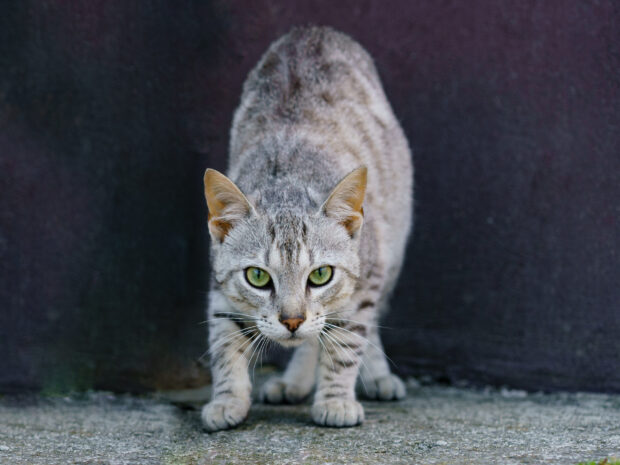A dominant cat may display behaviors such as marking territory, challenging other cats, and guarding resources. These behaviors are natural ways for cats to establish their position in their social hierarchy.
Understanding these behaviors can help cat owners manage their pet’s interactions with other cats and provide appropriate enrichment for their dominant feline. We will explore eight common behaviors that are typical for a dominant cat and provide insights into the psychology behind these behaviors.
By recognizing and addressing these behaviors, cat owners can foster a harmonious living environment for both their dominant cat and any other pets in the household.
Contents
Understanding Dominant Cats
Characteristics of dominant cats: Dominant cats often exhibit certain behaviors that indicate their leadership in the household. These behaviors can include territorial marking, challenging other pets, demanding attention, and asserting themselves during feeding time. Important behaviors to watch for: It’s essential to observe their body language and interactions with other pets to understand their dominant nature. Keeping a close eye on their behavior can help determine if they are exhibiting dominant traits and allow for appropriate handling and training.
Assertive Body Language
Posture and Tail Positioning: Dominant cats often stand tall with their tail held high and may arch their back to appear larger and more imposing.
Eye Contact and Vocalization: A dominant cat will maintain direct eye contact with others, conveying a sense of authority. Additionally, they may use vocalizations to assert their dominance, such as growling or hissing to communicate their position in the hierarchy.
Social Hierarchy In Cat Groups
Dominate behaviors in cats are often displayed in social interactions within cat groups. Dominance theory is an intriguing aspect of feline communities, as it shapes the social hierarchy and influences the interactions among cats. In cat groups, the role of dominance is paramount, as dominant cats often exhibit behaviors such as marking their territory, engaging in aggressive displays, and controlling essential resources like food and resting spots. Understanding these dominant behaviors is crucial for cat owners to create a harmonious environment for their feline companions.

Credit: catsavant.com
Frequently Asked Questions On 8 Behaviors That Are Typical For A Dominant Cat
What Are The Typical Behaviors Of Dominant Cats?
Dominant cats may display behaviors such as marking territory, exhibiting confident body language, and being assertive during interactions with other cats.
How To Deal With A Dominant Cat In The Household?
To manage a dominant cat, provide plenty of vertical space, offer stimulating toys, and establish a predictable routine to reduce stress and anxiety.
Can A Dominant Cat Be Trained To Be More Submissive?
While it’s challenging, training techniques like positive reinforcement and redirecting negative behaviors can encourage a dominant cat to be more cooperative and less confrontational.
Conclusion
Understanding the behaviors of a dominant cat is essential for their well-being. By recognizing these traits, you can create a harmonious environment for both your cat and yourself. Provide opportunities for your dominant cat to assert their leadership while ensuring they respect boundaries; this will help cultivate a healthy and balanced relationship.
With the right approach, a dominant cat can thrive in a loving and secure home.

Katie Lindsey is a passionate cat lover and founder of Cats Solution, a comprehensive resource for all things feline. With a lifelong love for cats and extensive knowledge in their care and behavior, she provides expert advice and solutions to cat owners. Through her website, Katie fosters a supportive community where cat enthusiasts can find guidance and heartwarming stories. A dedicated advocate for animal welfare, Katie also promotes responsible pet ownership and adoption. Join her on this purr-fect journey celebrating the joy of feline companionship.



